Abstract
The addition of misonidazole (MISO) or metronidazole (METRO) to treatment with cyclophosphamide (CY) increased delay to regrowth of 2 experimental tumours. The effect was observed for large an small tumours, was present for doses of MISO that are ineffective for killing hypoxic cells, and required that it be given with, or shortly before CY. Mice receiving combined treatment had more weight loss and myelosuppression than those receiving CY alone, and the Therapeutic Index was lower. MISO caused a marked increase in growth delay when combined with BCNU to treat the KHT sarcoma. This effect was observed for small and large tumours, required simultaneous administration of drugs, and also led to increased host toxicity. There was no therapeutic advantage from combined treatment. Survival of aerobic or anoxic Chinese hamster ovary (CHO) cells was assessed after exposure in vitro to serum from mice that had received CY or BCNU alone. MISO alone, or combined treatment. Results of these experiments suggest that (1) MISO delays the excretion or breakdown of active metabolites of CY, and (2) at a dose that does not kill hypoxic cells, it may selectively "sensitize" hypoxic cells (but not aerobic cells) to the action of BCNU. The presence of other undetermined interactions of BCNU and MISO is inferred from the increased toxicity to (aerobic) normal tissue. Misonidazole or metronidazole should be used with caution in patients who are receiving BCNU or cyclophosphamide.
Full text
PDF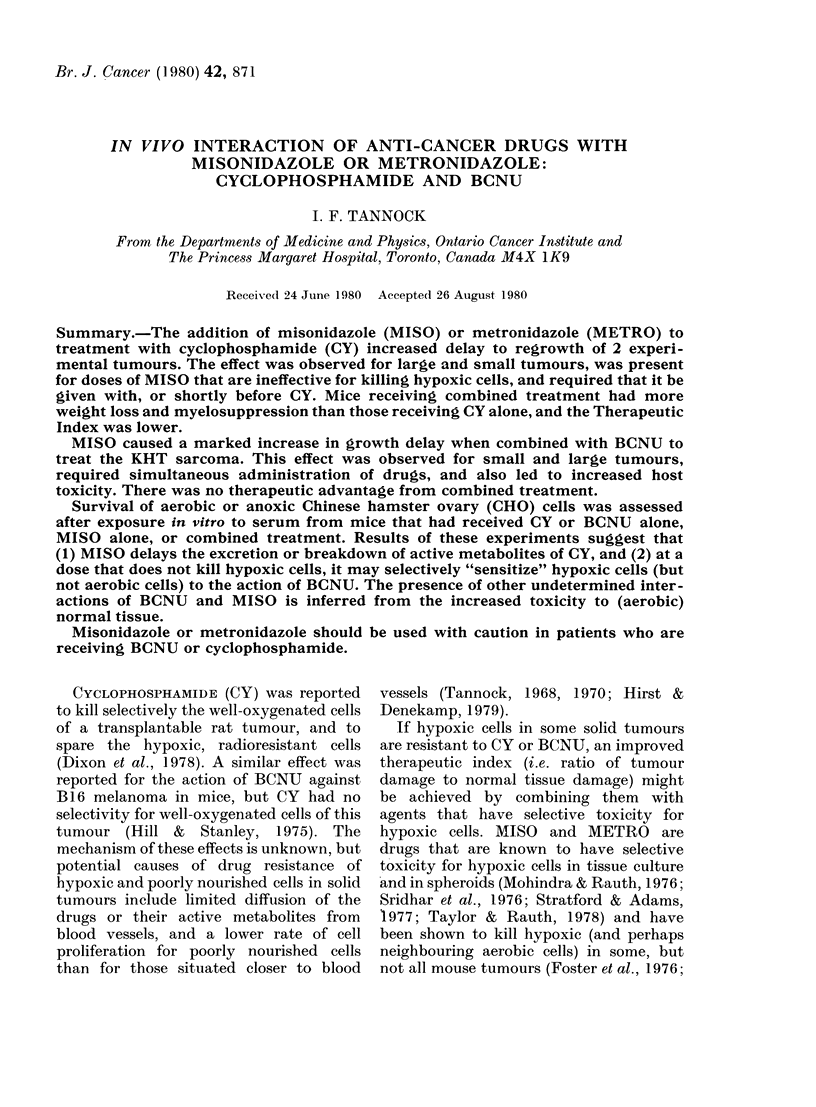
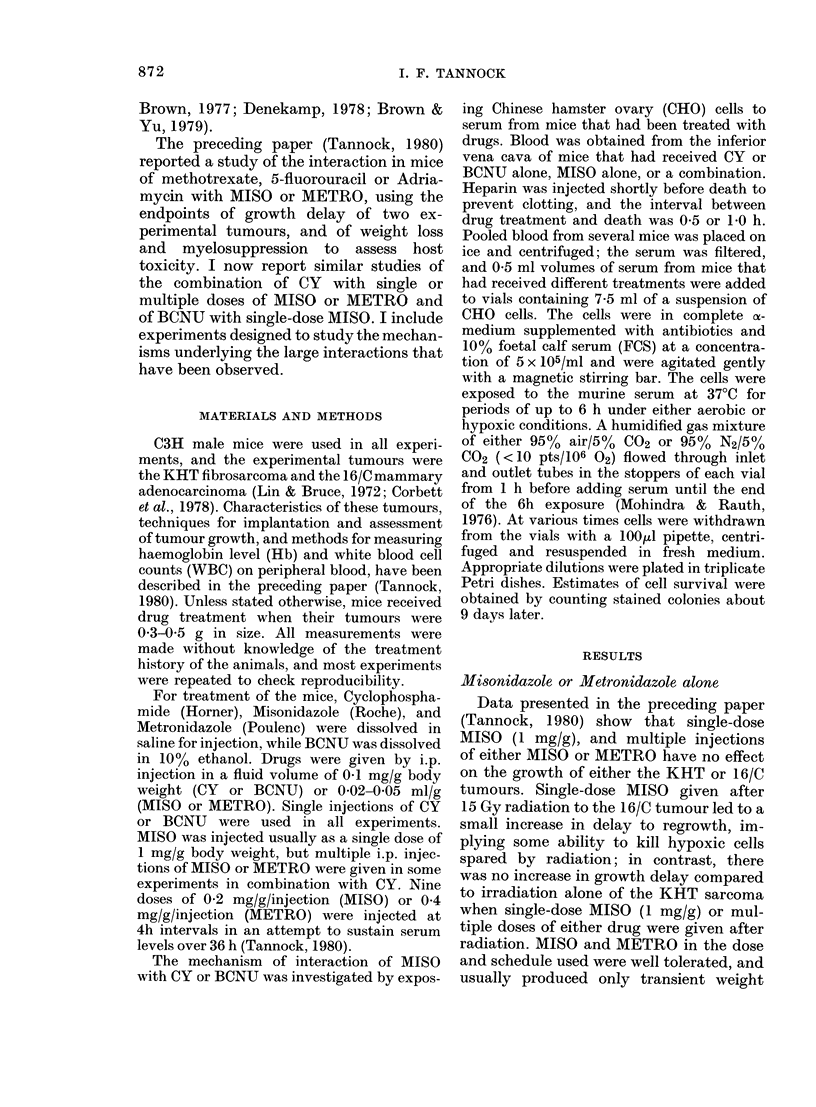
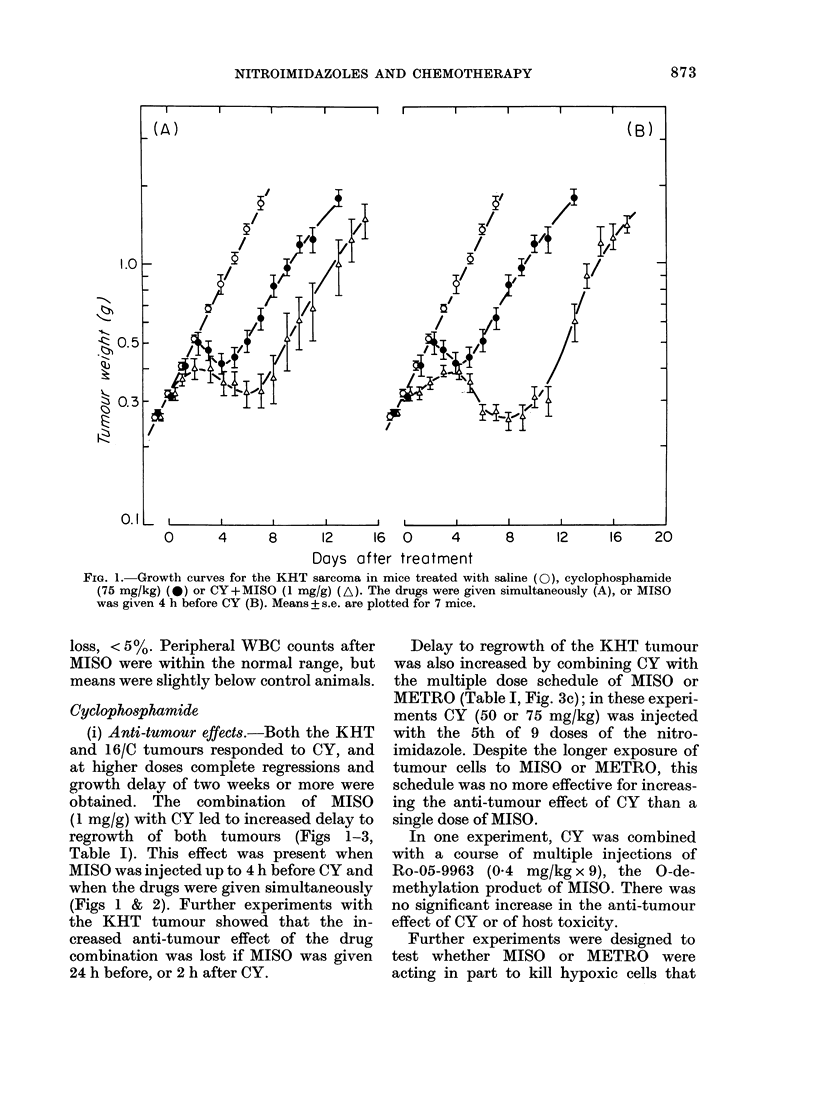
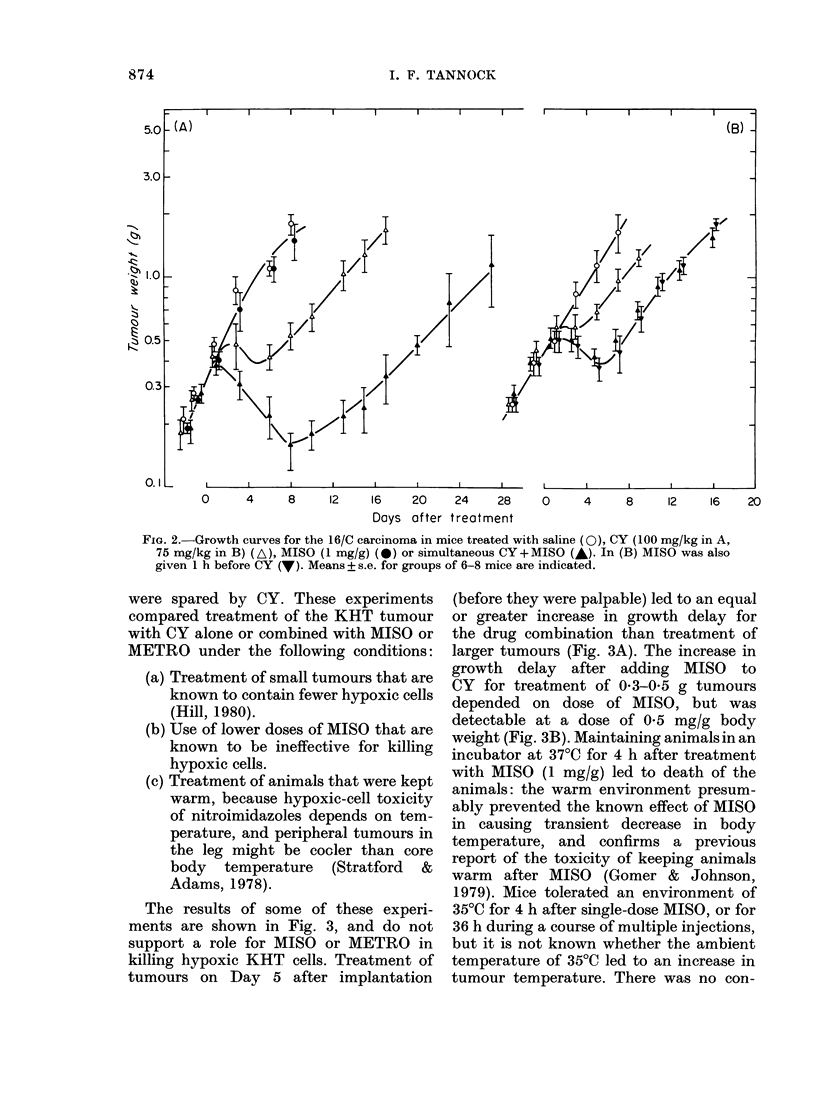
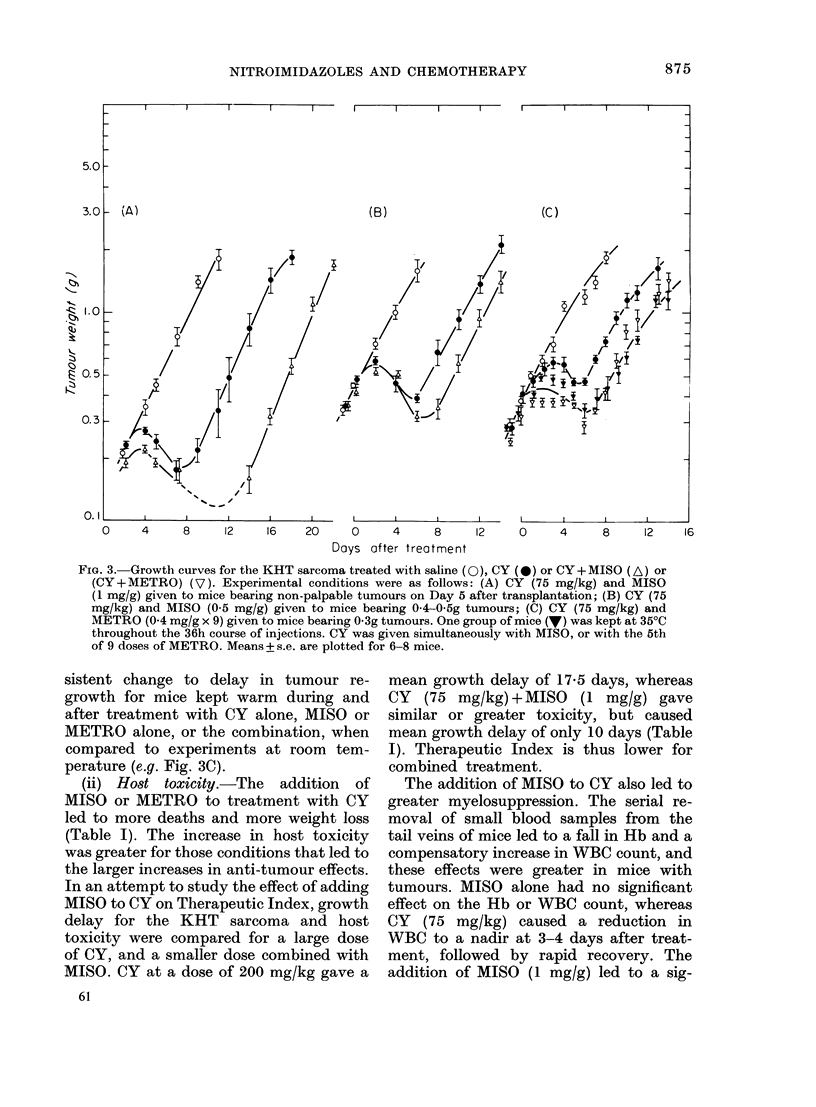
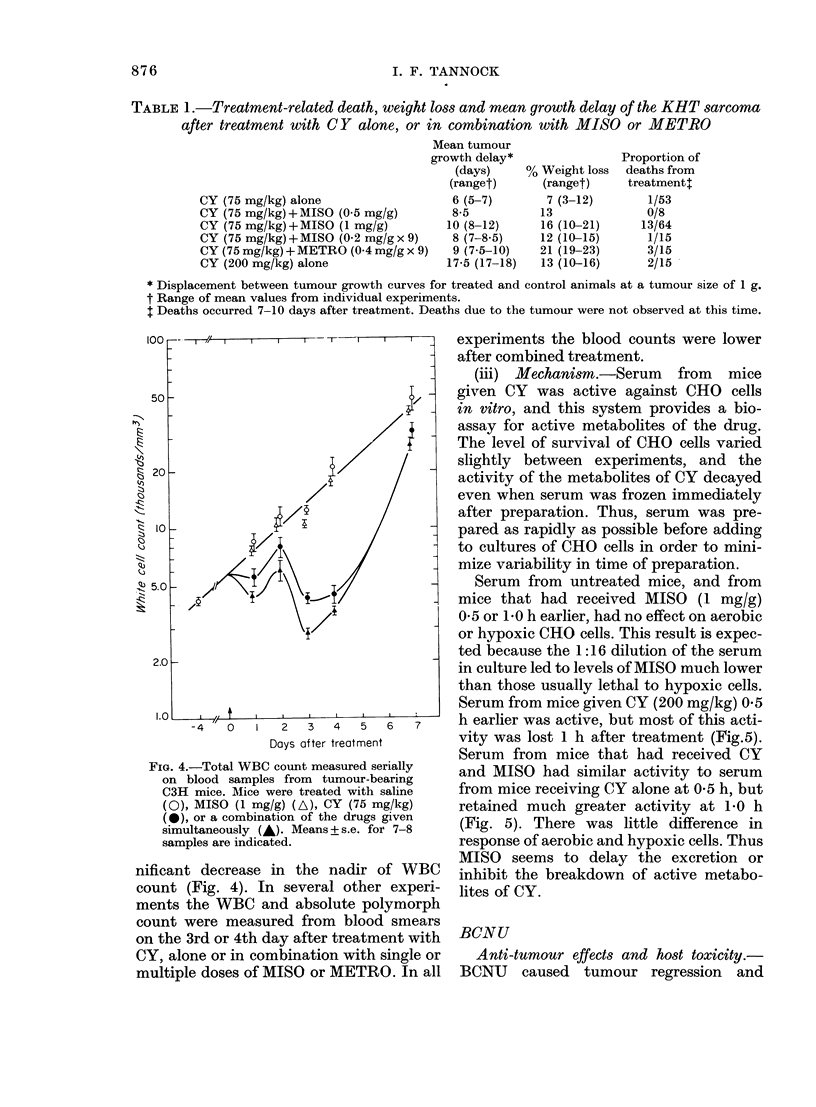
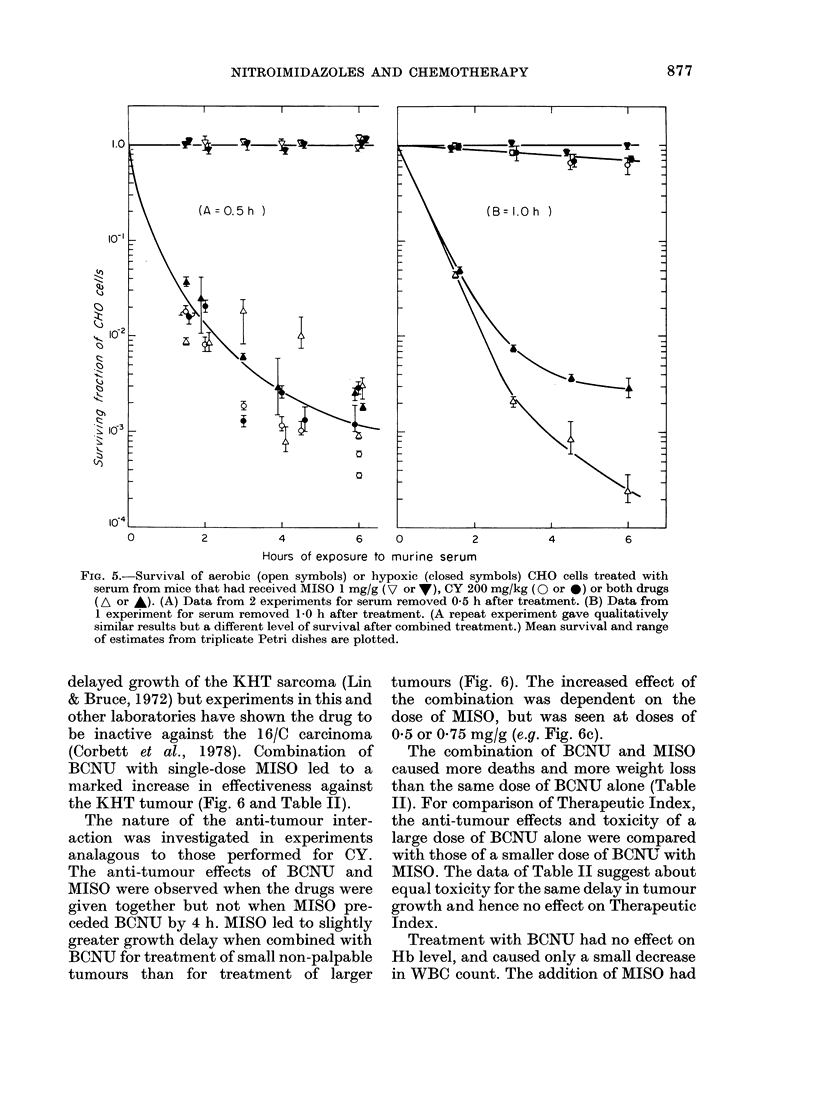

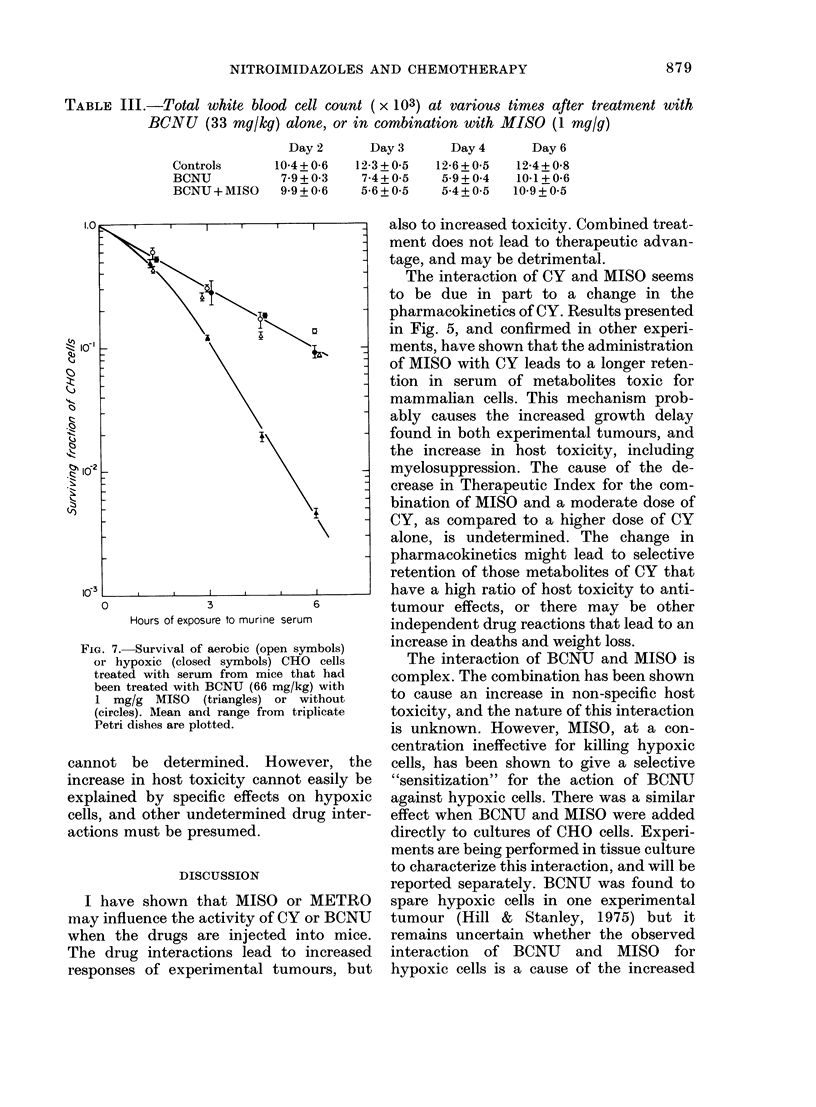
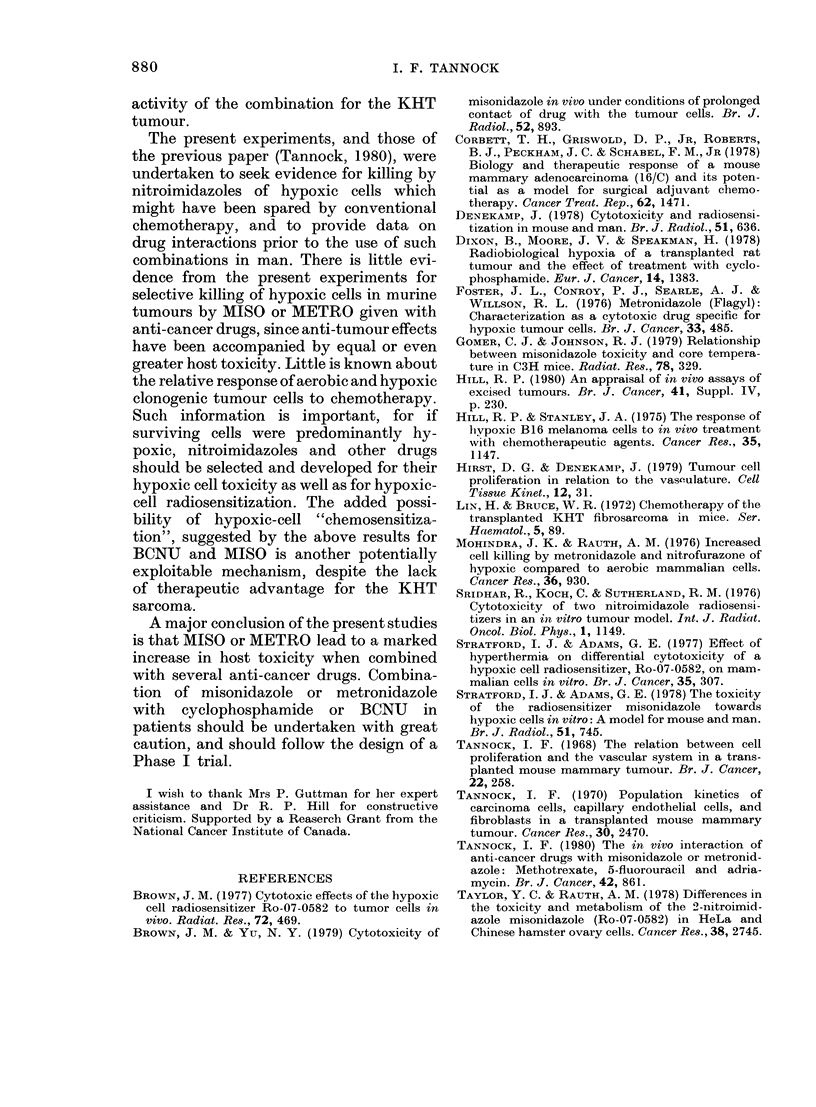
Selected References
These references are in PubMed. This may not be the complete list of references from this article.
- Brown J. M. Cytotoxic effects of the hypoxic cell radiosensitizer Ro 7-0582 to tumor cells in vivo. Radiat Res. 1977 Dec;72(3):469–486. [PubMed] [Google Scholar]
- Brown J. M., Yu N. Y. Cytotoxicity of misonidazole in vivo under conditions of prolonged contact of drug with the tumour cells. Br J Radiol. 1979 Nov;52(623):893–896. doi: 10.1259/0007-1285-52-623-893. [DOI] [PubMed] [Google Scholar]
- Corbett T. H., Griswold D. P., Jr, Roberts B. J., Peckham J. C., Schabel F. M., Jr Biology and therapeutic response of a mouse mammary adenocarcinoma (16/C) and its potential as a model for surgical adjuvant chemotherapy. Cancer Treat Rep. 1978 Oct;62(10):1471–1488. [PubMed] [Google Scholar]
- Denekamp J. Cytotoxicity and radiosensitization in mouse and man. Br J Radiol. 1978 Aug;51(608):636–637. doi: 10.1259/0007-1285-51-608-636. [DOI] [PubMed] [Google Scholar]
- Dixon B., Moore J. V., Speakman H. Radiobiological hypoxia of a transplanted rat tumour and the effect of treatment with cyclophosphamide. Eur J Cancer. 1978 Dec;14(12):1383–1387. doi: 10.1016/0014-2964(78)90122-6. [DOI] [PubMed] [Google Scholar]
- Foster J. L., Conroy P. J., Searle A. J., Willson R. L. Metronidazole (Flagyl): characterization as a cytotoxic drug specific for hypoxic tumour cells. Br J Cancer. 1976 May;33(5):485–490. doi: 10.1038/bjc.1976.78. [DOI] [PMC free article] [PubMed] [Google Scholar]
- Gomer C. J., Johnson R. J. Relationship between misonidazole toxicity and core temperature in C3H mice. Radiat Res. 1979 May;78(2):329–333. [PubMed] [Google Scholar]
- Hill R. P. An appraisal of in vivo assays of excised tumours. Br J Cancer Suppl. 1980 Apr;4:230–239. [PMC free article] [PubMed] [Google Scholar]
- Hill R. P., Stanley J. A. The response of hypoxic B16 melanoma cells to in vivo treatment with chemotherapeutic agents. Cancer Res. 1975 May;35(5):1147–1153. [PubMed] [Google Scholar]
- Hirst D. G., Denekamp J. Tumour cell proliferation in relation to the vasculature. Cell Tissue Kinet. 1979 Jan;12(1):31–42. doi: 10.1111/j.1365-2184.1979.tb00111.x. [DOI] [PubMed] [Google Scholar]
- Lin H., Bruce W. R. Chemotherapy of the transplanted KHT fibrosarcoma in mice. Ser Haematol. 1972;5(2):89–104. [PubMed] [Google Scholar]
- Mohindra J. K., Rauth A. M. Increased cell killing by metronidazole and nitrofurazone of hypoxic compared to aerobic mammalian cells. Cancer Res. 1976 Mar;36(3):930–936. [PubMed] [Google Scholar]
- Sridhar R., Koch C., Suterland R. Cytotoxicity of two nitroimidazole radiosensitizers in an in vitro tumor model. Int J Radiat Oncol Biol Phys. 1976 Nov-Dec;1(11-12):1149–1157. doi: 10.1016/0360-3016(76)90088-2. [DOI] [PubMed] [Google Scholar]
- Stratford I. J., Adams G. E. Effect of hyperthermia on differential cytotoxicity of a hypoxic cell radiosensitizer, Ro-07-0582, on mammalian cells in vitro. Br J Cancer. 1977 Mar;35(3):307–313. doi: 10.1038/bjc.1977.44. [DOI] [PMC free article] [PubMed] [Google Scholar]
- Stratford I. J., Adams G. E. The toxicity of the radiosensitizer misonidazole towards hypoxic cells in vitro: a model for mouse and man. Br J Radiol. 1978 Sep;51(609):745–746. doi: 10.1259/0007-1285-51-609-745. [DOI] [PubMed] [Google Scholar]
- Tannock I. F. In vivo interaction of anti-cancer drugs with misonidazole or metronidazole: methotrexate, 5-fluorouracil and adriamycin. Br J Cancer. 1980 Dec;42(6):861–870. doi: 10.1038/bjc.1980.334. [DOI] [PMC free article] [PubMed] [Google Scholar]
- Tannock I. F. Population kinetics of carcinoma cells, capillary endothelial cells, and fibroblasts in a transplanted mouse mammary tumor. Cancer Res. 1970 Oct;30(10):2470–2476. [PubMed] [Google Scholar]
- Tannock I. F. The relation between cell proliferation and the vascular system in a transplanted mouse mammary tumour. Br J Cancer. 1968 Jun;22(2):258–273. doi: 10.1038/bjc.1968.34. [DOI] [PMC free article] [PubMed] [Google Scholar]
- Taylor Y. C., Rauth A. M. Differences in the toxicity and metabolism of the 2-nitroimidazole misonidazole (Ro-07-0582) in HeLa and Chinese hamster ovary cells. Cancer Res. 1978 Sep;38(9):2745–2752. [PubMed] [Google Scholar]


